Introduction
Story
Cash Back
“The weekend has just started and Logan Wilson is spending his time thinking of ways to pay back his friends. Logan had asked his best friends to provide him with some money to help pay for his house and various other things. Being given that money, he ended up having a total of ten million dollars. He sits in his house, thinking about all of those Franklins that he has taken ownership of. He sits there with his hand over his chiseled jaw and his knee shaking. He is in a conflict of mind, thinking about the most responsible thing to do with his money. He decides that the best thing to do with his money is to gamble with it. The process for making this decision would probably make you facepalm yourself so hard that you’d end up with a shattered frontal bone and a handprint on your forehead. He decides to make a trip to a special place and is sure about his decision.
Midnight. A shivering shower pours over a casino, where a high stakes poker game is near the edge of its closure. Logan is face to face with his final opponent. Two pairs of striking brown eyes staring at each other. One hundred million is at stake for both of these men, and it comes down to this hand. Logan is holding two nines in his hand, but after a very unfortunate last hand, he has to risk this play. The hand begins with a $500,000 blind. The opponent raises to one million. Startled by this play, Logan decides to call, and puts one million down. Logan to his side in ire as he just bet eighty percent of his remains. Three cards are dealt: Two Aces and a King. The opponent looks at his current cards, laughs under his breath, and goes all in. Logan realizes that he is in a horrendous situation, and he knew that folding wouldn’t work, so he decides to go all in as well. Both players put their cards down, and Logan sees the Ace and the King that the opponent was holding. Logan’s heartbeat triples as he looks at the dealer. Sweat pouring down the sides of his face as the dealer put two more cards onto the table. The first card he sees is another nine. Wishing hopefully for something good to turn out, Logan tilts his head down, as he waits for the dealer to deal the final card. A grin from the opponent’s face emerges. With his confidence, he feels the money on the tips of his fingers. At that moment, everything goes silent. After a few seconds, a slight thud is heard as the final card is put down. Logan looks up to see a dismayed face looking at the final card. A large crowd surrounds the table in awe as Logan turns his head to see the final card: a nine. Logan managed to match four of the same numbered cards, which was much better than anything else the opponent had. Logan sheds a tear at that moment. He looks up at his opponent, as he stares at him with absolutely no emotion. Logan stares back at him with cockiness plastered on his face. As the chips are being gathered, the opponent stands up and walks away from the table. Logan stares at him, as he disappears into a crowd of people.
The prize money is transferred to his bank account. As Logan leaves the casino, he contemplates his attitude at the table, and his choice to even play the game. He realized how little of a chance he had to win the game, and he feels a slight amount of guilt. He sits in his car and starts the engine. He turns to look behind him, and he sees his opponent walking down the parking lot. Logan looks at him as he struts with his head down. He stares… stares… stares… and then drives away.
Logan pulls up to his house in a very slow manner. He exits the car and locks the door as the seat slowly rises to its original position. He enters his house, flicks the lights on, and proceeds to strut up to the stairs. He enters the bathroom, washes his hands under some nice, warm water, releasing some of the pent up tension. He then walks into his room, chucks his keys on his table, undresses, and sits on his bed. He stares off into space as he wonders what to do with this huge amount of cash. He looks around his bedroom and places his hand on the Nylon carpet below. After a dozen seconds of contemplation, he lays down, covers himself in his sheets, and dozes off.
A few days later, a good friend of Logan’s, Lucas, wakes up at 5 am. He goes off for a jog for a good fifty minutes, with the cold morning breeze blowing through his hair. He returns to his home with heat radiating off his body and drops of sweat rolling down. He takes a hot shower, and afterward, he goes and checks his mail and such. He discovered that five million dollars were wired to his bank account. He was puzzled when he saw all those zeros, so he called his other friends. They talked a little bit about this phenomenon, each sharing to each other how much money they received. Lucas continues to pace around his room with his phone in his hand and hears a beep coming from outside. He looks out the window to see a BMW i8 sitting in the driveway. Lucas smiles and laughs as he dresses into his business casual clothing. He walks out of the house and hops into the BMW i8 passenger seat, as the car makes its way to his work.”
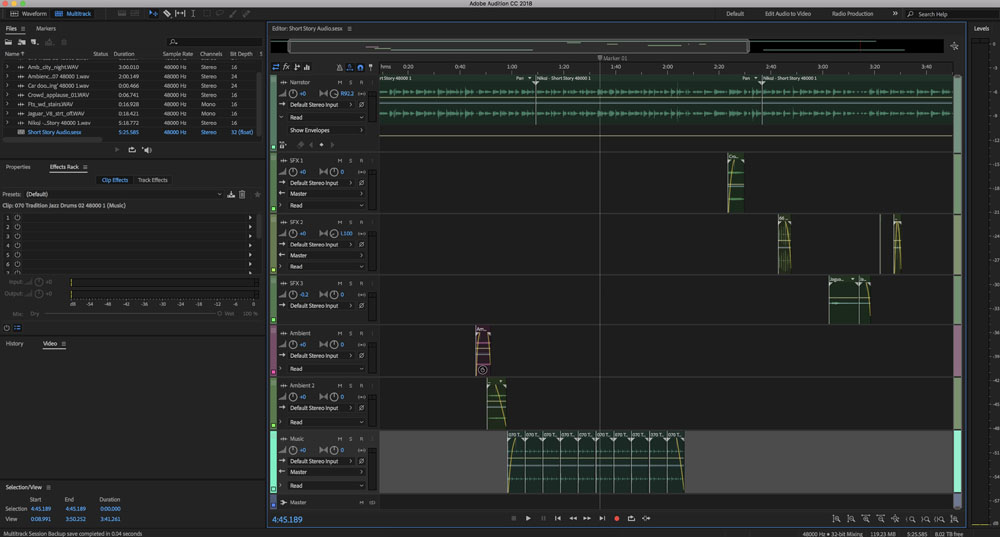
This is an image of Adobe Audition. this is where we combine our story audio with our sound effects in multiple ways.
Illustrations
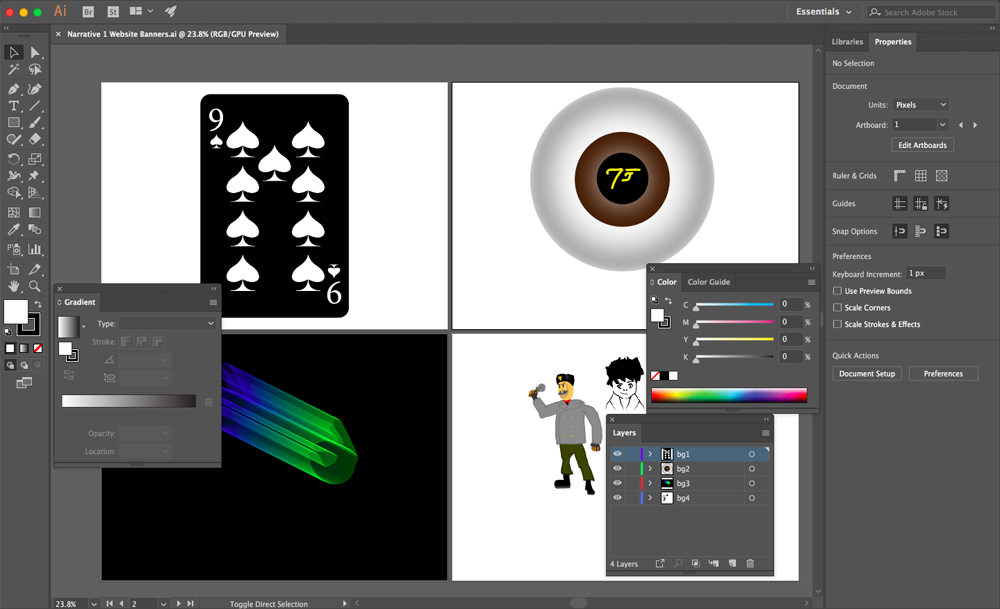
This is a screenshot of Adobe Illustrator, showcasing the banners, and some of the tools that I used to make the images.

This is the personal illustration I made for the assignment. I honestly had no idea where I was going with this, but this is what I got.
Animation Crap

This is a screenshot of the various different projects we work on. We have our narrative file, with a bunch of different things for the narrative, as well as folders and .fla files for other projects.
Character Design + Bio
Before we worked on the narrative, we were tasked with making another really short animation, that being a walk cycle. That walk cycle would be used to make a “Mood Scene,” where you use a combination of character, walk style, and lighting to portray a certain emotion that the character is feeling. We had to make 2 different characters, both with differing personalities, and try to express that in our walk cycle.
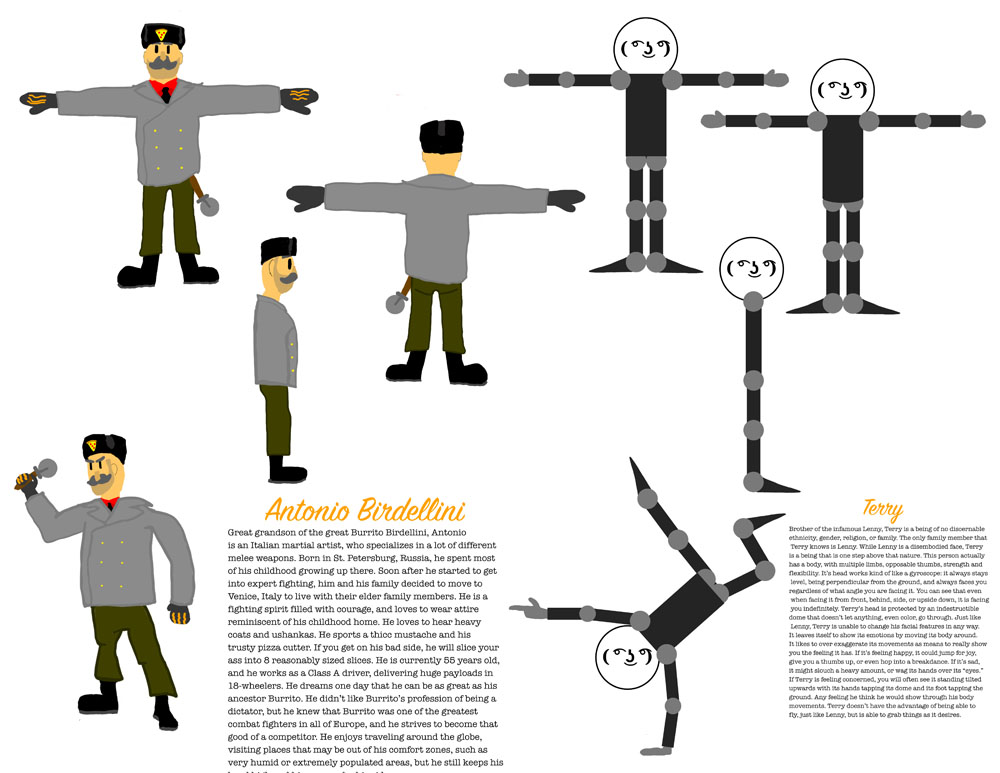
Mood Scene
Here we are, the mood scene. Before we started with the walk animations, we had to build a physical background set, as you see in the video. We used cardboard, paper, and plastic. We also took photos of the set under different lighting to put in the video. The silhouettes of trees you see are the foregrounds added in on the last step in post editing. Try to guess what emotion these guys feel.
ARVE Error: Mode: lazyload not available (ARVE Pro not active?), switching to normal mode
Rotoscope
In this project, we were given a 4-second clip of a guy doing some parkour, and we had to rotoscope it. To rotoscope is to use footage of sorts, and “trace” over it to make a “unique” piece of media. Basically, you’re tracing a video frame by frame and adding some stuff on it. That’s really it.
ARVE Error: Mode: lazyload not available (ARVE Pro not active?), switching to normal mode
Narrative
The narrative was an… interesting project, and at the end of it all, I can say that I’m glad it’s… well it’s not done. The final product isn’t very final, but at least we have something to show for it. I worked on this project alongside 2 other people: Anthony Park and Colby Johansson. As I said before, this is a 90-120 second short narrative with no dialogue. When working in our groups, we divided the work up among us 3. Anthony was responsible for the character design and the second act. Colby was tasked with making the city background and the first act. I was tasked with the beach background and the last act. We each spent our time working on our pieces, and after lots of animating, and a bit of sound design, we put the parts together to make the final narrative. The narrative is called “Sketch.” The plot of this narrative is that this character, named Frederick, lives in a world completely devoid of color. He goes through his day and stumbles upon a pencil and notepad. He picks up the 2 items and draws some things on the pad. He notices that the objects he draws have color on them, and is surprised to see this. As if that wasn’t enough, he then sees that the things he draws manifest into physical objects with color outside of the pad. He goes off and does some things with the pencil and pad, but unfortunately, he does something really bad and is unable to reverse the effects, so he has to deal with it another way. The inspiration for this narrative is basically the Spongebob episode “Doodlebob,” but this isn’t nearly as lighthearted, entertaining, or good.
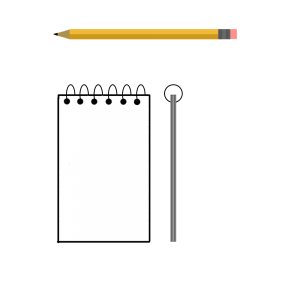
This is a sketch of some of the items used in the animation.
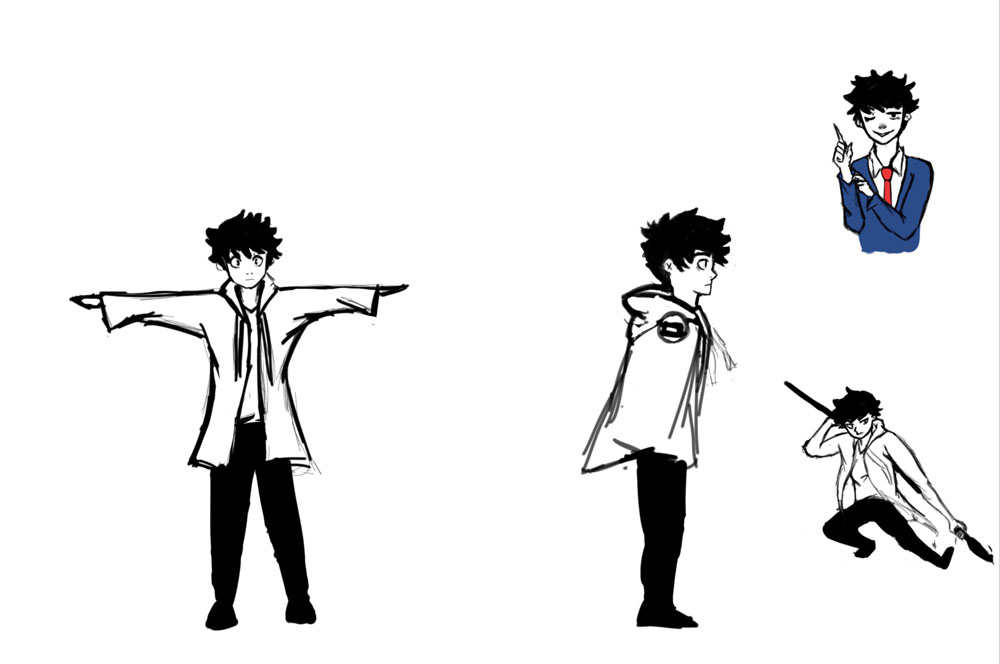
This is a rough sketch of the character that my partner Anthony made to be used in the animation.